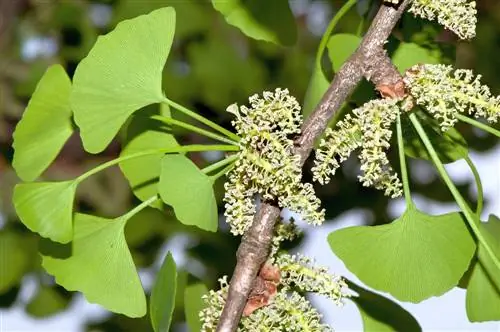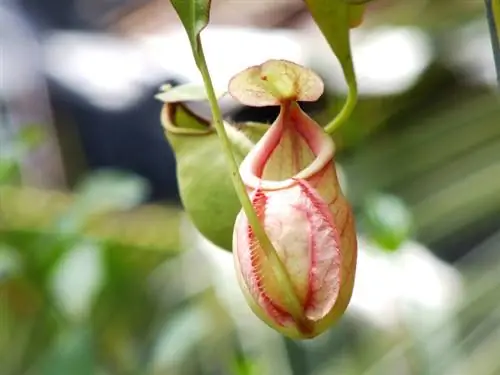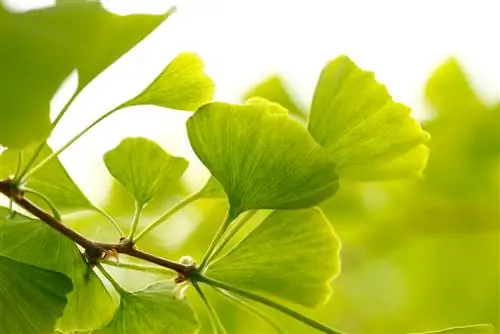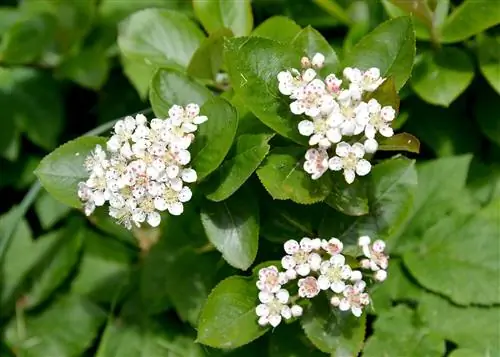- Author admin [email protected].
- Public 2023-12-16 16:46.
- Last modified 2025-01-23 11:21.
The ginkgo tree is an attractive ornamental tree in the garden, not least because of its specially shaped leaves; the flowers are hardly responsible for this. In terms of color they are not particularly noticeable, what is more interesting is the fact that there are pure and male trees.
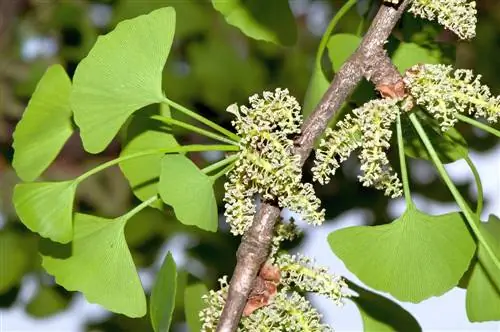
What does the ginkgo flower look like?
The ginkgo flower is yellowish-green and inconspicuous. Male flowers are catkin-shaped, 2-3 cm long, while female flowers are a few millimeters in size and produce unpleasant-smelling fruits. The flowering period is between March and May, and the ginkgo is a wind pollinator.
You certainly won't notice the difference with a young ginkgo because the leaves look the same. The differently shaped flowers only appear when they reach sexual maturity. Only the female flowers later develop mirabelle-like fruits. However, their seed coat does not smell very pleasant when ripe. The scent is reminiscent of rancid butter because the shell contains, among other things, butyric acid.
How do male and female flowers differ?
The male flowers grow as so-called catkins. These are about two to three centimeters long and usually appear before the leaves in March. Ginkgo pollination occurs through the wind. After flowering the catkins fall off.
The female flowers usually grow in pairs on small stems that are one to one and a half centimeters long. As a rule, however, only one fruit ripens there. The fruits look similar to mirabelle plums, but botanically they are nuts.
The most important things in brief:
- Flower color yellowish-green
- male flowers: catkin-shaped, approx. 2 to 3 cm long
- female flowers: a few millimeters in size, usually in pairs on small stems, later develop unpleasant-smelling fruits
- grow on leaf axils
- Flowering time: from March to April or May
- Wind pollinators
Tip
Since the ripe seed shells of the female trees smell quite unpleasant (like butyric acid), you should not plant them where you like to be during the ripening period.

